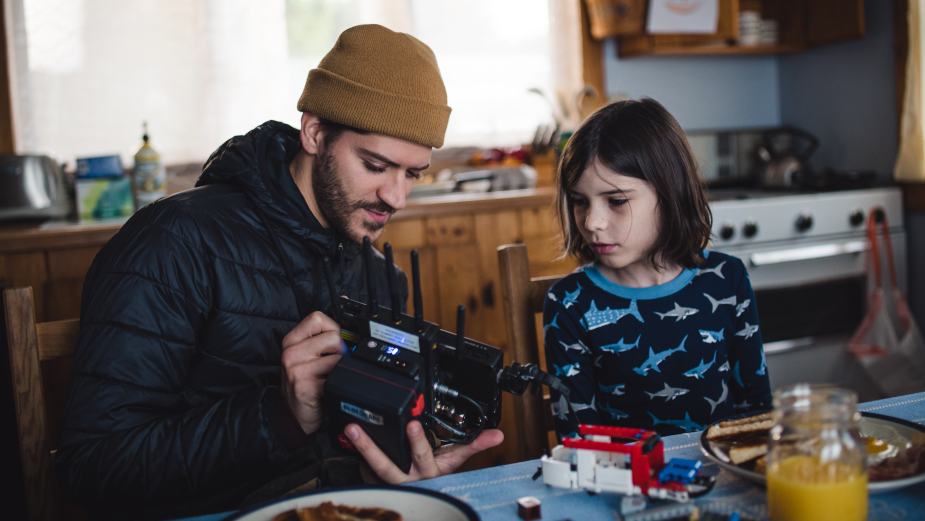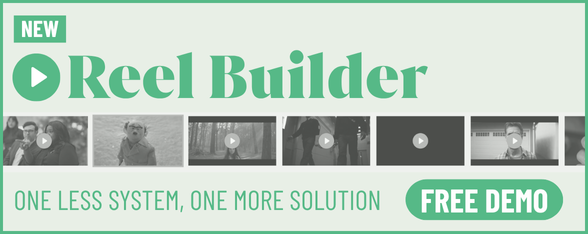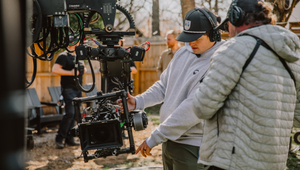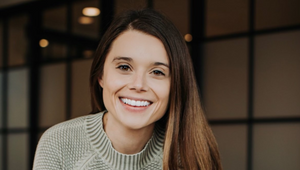
The Directors: Connor Carroll

Connor's love for film was sparked at a young age. He grew up in front of the camera, acting in commercials and movies well into his teens, but it wasn't until after college that he began to hone his skills behind the camera. In order to learn the craft, he spent many years working for a production company and ad agency before making the jump. As a director, Connor aspires to tell authentic, cinematic stories that embrace the human condition and evoke real emotion. He places a lot of value in putting the right people in the right roles to achieve a common goal, and his personable nature and ability to connect with people are some of his greatest strengths on and off set.
Name: Connor Carroll
Location: Nashville, TN
Repped by/in: <Superlative
Awards: Best Micro Film: Independent Short Awards; Outstanding Achievement: IndieX Film Festival; 2020 Telly Award for Blue Foundry Bank “The Place for You”; 2020 Telly Award for Blue Foundry Bank Axis Checking “The One”; 2021 Silver Addy Award in Film, Video & Sound Internet Commercial for Tennessee State Parks “Open the Door to Adventure”
LBB> What elements of a script sets one apart from the other, and what sort of scripts get you excited to shoot them?
Connor> The first thing I look for in a script is how fleshed out the current creative is. Some boards come to me, and it seems clear that this is precisely what the client wants, which is okay! Some ideas are just meant to be executed well. A script that gets me excited has room for me to breathe life into the idea. When there are elements of humanity already in the script, I get to explore emotion and even find ways to connect it to a product or idea. That’s the fun part!
LBB> How do you approach creating a treatment for a spot?
Connor> Treatments are the instruction manual for the idea. The agency brings the list of materials and talks to you about the style. Is it supposed to be modern or contemporary? Large and flashy, or gentle but impactful? From there, I then go and try and make the instruction manual an exciting read.
LBB> If the script is for a brand that you’re not familiar with/ don’t have a significant affinity with or a market you’re new to, how important is it for you to do research and understand that strategic and contextual side of the ad? If it’s important to you, how do you do it?
Connor> It is vital to research, regardless of familiarity with the brand. Sometimes coming in cold on that stuff is helpful, and it gives you a great place to start. Ultimately, what you’re creating needs to work for the brand or the market it will live in, so do the due diligence.
I start by going and watching a lot of the brand's previous work such as print work, social ads, or broadcast. I try to get a feel for their messaging and what their voice sounds like as it helps me understand how to integrate my voice into the creative.
LBB> For you, what is the most important working relationship for a director to have with another person in making an ad? And why?
Connor> This is a tough question. I think it changes between a few different people throughout the process. What I wish was the most important relationship is the director and the creative team. They have spent so much time with the idea, have a relationship with the client, and can be a great resource to check in and ensure that everything is done and serves the ad effectively.
LBB> What type of work are you most passionate about - is there a particular genre or subject matter or style you’re most drawn to?
Connor> My favourite genres are emotional branded storytelling, whether a single subject or lifestyle. Stories that surprise you when the final logo pops up. When you can share something with an audience that draws them in, it scratches that creative itch, especially if the brand becomes part of the story and not the subject.
Good brands don’t talk about themselves; they talk about what they love.
LBB> What misconception about you or your work do you most often encounter and why is it wrong?
Connor> A common misconception is that my work is sad. I lean toward heartfelt, and if it makes your mom tear up, even better. My work is always meant to be hopeful at the end of the day. I try to focus on the simple gesture. That extra mile my character goes for someone. To me, that journey that leads to that heartfelt gesture is the story.
LBB> Have you ever worked with a cost consultant, and if so how have your experiences been?
Connor> I have worked with cost consultants on both the agency and production sides.
It makes sense why they’re needed, but in my experience, for what they charge, they should be more involved and understand a little more about our industry.
LBB> What’s the craziest problem you’ve come across in the course of a production and how did you solve it?
Connor> It was 2am in Uruguay and we were filming a transition between a beach bonfire to a neon club with flashy lights. We informed the client that the amount of wind on the beach couldn’t be helped, and we were pumping in fog, so it may not stay. Upon seeing the sand as the club's floor, we were essentially asked to stop the wind.
I believe client experience on set is a big part of a successful shoot. If they have a miserable time, they will constantly see reminders of it in the edit. I spoke with the client and voiced our inability to do much but promised we wouldn’t stop trying. Ultimately we enclosed our talent in a makeshift curtain made of muslin and speed-rail tied together (SAFELY!). It kind of worked, but the client was happy in the end because I didn’t say no to the insane request of stopping the wind.
LBB> How do you strike the balance between being open/collaborative with the agency and brand/client while also protecting the idea?
Connor> I spent many years as an agency producer and the one thing my CD and I craved was more collaboration with the director. Now that I’m on the other side, I make sure to spend the appropriate amount of time with the creative team in pre-pro. That time allows us to build trust and refine the idea together.
LBB> What are your thoughts on opening up the production world to a more diverse pool of talent? Are you open to mentoring and apprenticeships on set?
Connor> I love the idea of opening up our world to more diverse talent. Mentoring and apprenticeships are great ideas of how to help everyone with that transition while minimising the growing pains of a changing industry.
LBB> How do you feel the pandemic is going to influence the way you work into the longer term? Have you picked up new habits that you feel will stick around for a long time?
Connor> I think the most significant way the pandemic has influenced how I work was actually getting the time to develop new habits. With all the downtime, I focused on reading, writing, and trying to develop my voice, which I feel like I’ve finally started to tap into more.
LBB> Your work is now presented in so many different formats - to what extent do you keep each in mind while you’re working (and, equally to what degree is it possible to do so)?
Connor> Making a film work in multiple formats really comes down to planning. Knowing where it’s going to live so you can frame or alter your blocking accordingly. Putting guides on the monitor is always helpful so you can see your talent hit their marks for 9x16 or 4x5. Lastly, I always make my dept. heads aware of the deliverables. Thinking through multiple formats requires a lot of eyes, and they help me look for things in the monitor and ensure we nail our shot.
LBB> What’s your relationship with new technology and, if at all, how do you incorporate future-facing tech into your work (e.g. virtual production, interactive storytelling, AI/data-driven visuals etc.)?
Connor> I’ve been fortunate to work with tech like motion control arms and virtual LED walls on a few projects recently. They are important tools that help me achieve new ways to tell stories - that’s just how I look at them though, tools in my belt to be used when necessary. The LED wall lets me go back in time or to the top of Everest, but it has its limitations. I believe it’s always important to ask if the tool you’re using ultimately serves the idea or not.
LBB> Which pieces of work do you feel really show off what you do best – and why?
Connor> Rayleigh Scattering -
This is the kind of storytelling I’ve always wanted to do. It really felt like I had tapped into my voice on this one.
Let the Light Lead You Home -
I’ve always been a believer in the importance of the small gesture. This was an exercise in telling that kind of story. I had always wanted to shoot out on the water and it was amazing!
Tennessee State Parks -
I love the outdoors. I hope it shows in my work! This was an amazing creative team that fully trusted me with their vision. They asked for a musical edit and we found so many amazing sounds in nature that helped the music come alive.






